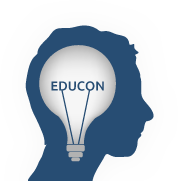A look at how Google Earth can foster empathy and broaden students' world view
This presentation will make the case that everyone should be using Google Earth as a sort of digital journal. You can easily make place marks that record (and reflect upon) the people and places we learn about in the world.
I started making Google Earth place marks four years ago. When I read a news article or have an interesting conversation with a person from a place I'm not familiar with, I make a place mark.
I now have more than 1,200 place marks. This practice has made me more empathetic and more globally aware.
For example, I had an "aha" moment when I looked up where Paul Ryan was from in Wisconsin (Janesville) and learned that his home town is located less than 60 miles from the Sikh temple shooting just outside Milwaukee in August 2012.
Imagine having middle school students make place marks for 10 stories a week. Multiple that by 30+ weeks per year for three years, and students would enter high school with a journal of more than 1,000 place marks. More importantly, the practice of reading the news on a daily basis would provide them with a global context that will serve them extremely well in high school and beyond. For more details, see http://wiltoday.wordpress.com/2012/07/10/typical-morning-at-tlc/
Conversational Practice
After a brief demonstration of how to make Google Earth place marks, each participant will create at least two Google Earth place marks, each of which could be used to tell your students a story when you get back from EduCon.
(see the website below for a 6-minute video showing Google Earth in action)
Google Earth is a great storytelling tool, and after we each learn to make a few place marks, we will each share one of our place marks — and the story that goes with the place mark — in small groups.
We will spend the remainder of our time together thinking about applications for Google Earth at your school. The expectation is that the conversation will continue as we find and share new applications in our various schools throughout 2013. We will record the start of the conversation in a shared Google Doc, and we can share further insights about how to learn with Google Earth using the #GElearn hashtag.
(the second website link below will take you to the shared Google Doc)
Conversation Links
- http://www.youtube.com/watch?v=LAx7vcOF9jM
- https://docs.google.com/document/d/1U7JdOI8XZ7GNqHiH108D7t9dwPd_Z8NU0vNK2QV-8PY/edit
-
Stephanie WujcikThe Baldwin School
-
Dina LucianoThe Haverford School
-
Samantha Morra
-
Kirsten TschofenCalgary catholic schools
-
Cyndy BordenSt. George's School of Mtl
-
Marge Bevad
-
Rebecca SchmidtInspired Teaching School
-
Emily Graves
-
Christina Roy
-
elizabeth helfant
-
Sara KrakauerInnovation Academy Charter School
-
Stephen Gagnon
-
Michelle WellerNC State University
-
Jamie BrittoCollegiate School
-
Brad CookeCollegiate School
-
Tom MullaneySchool District of Springfield Township
 EduCon 2023
EduCon 2023
Log in to post a comment.